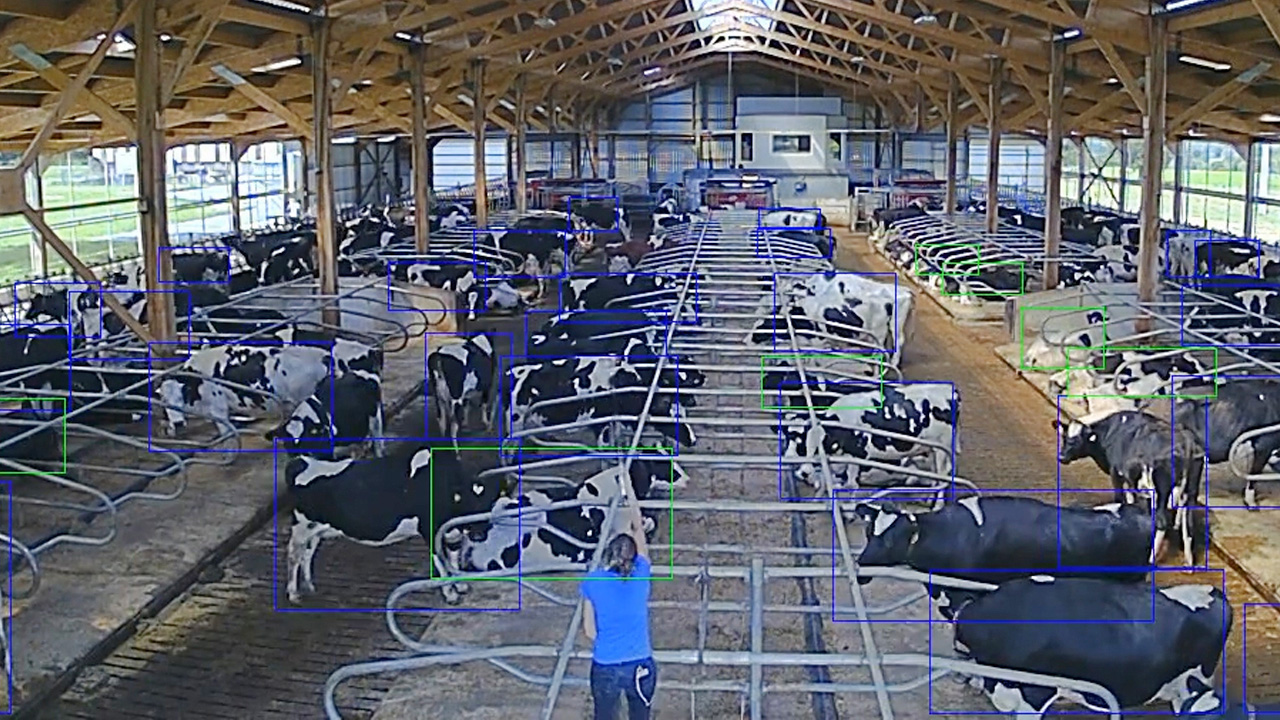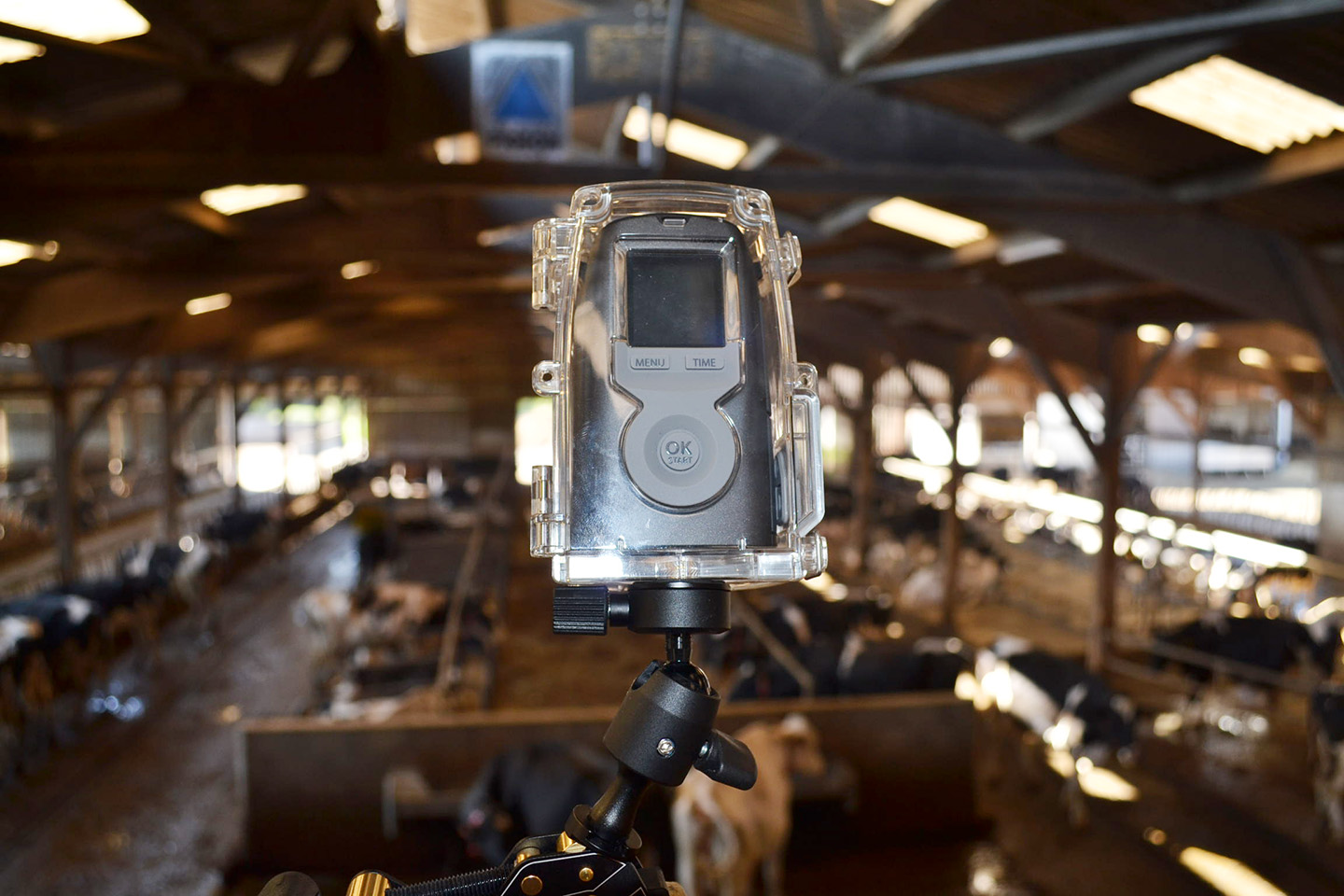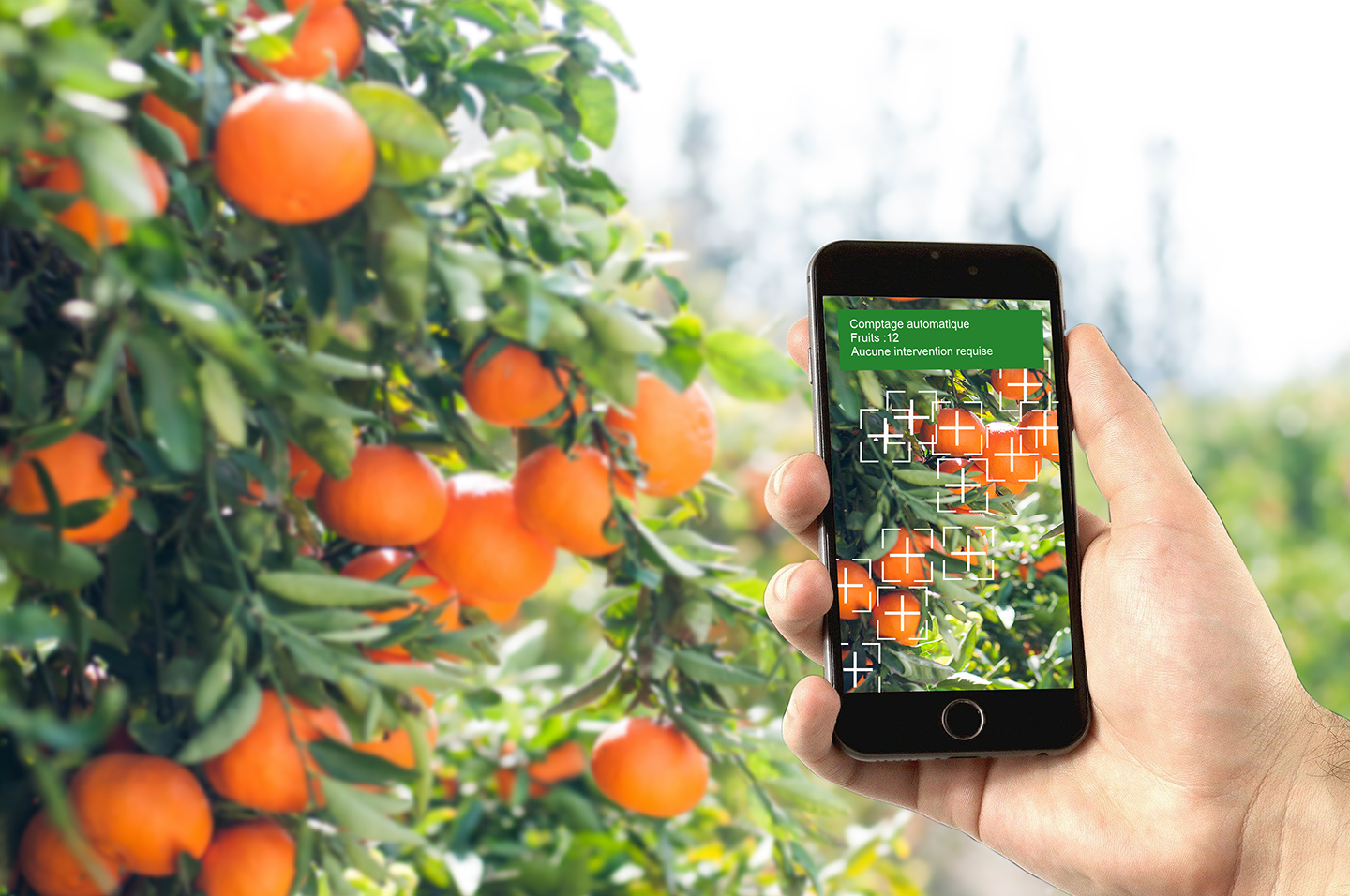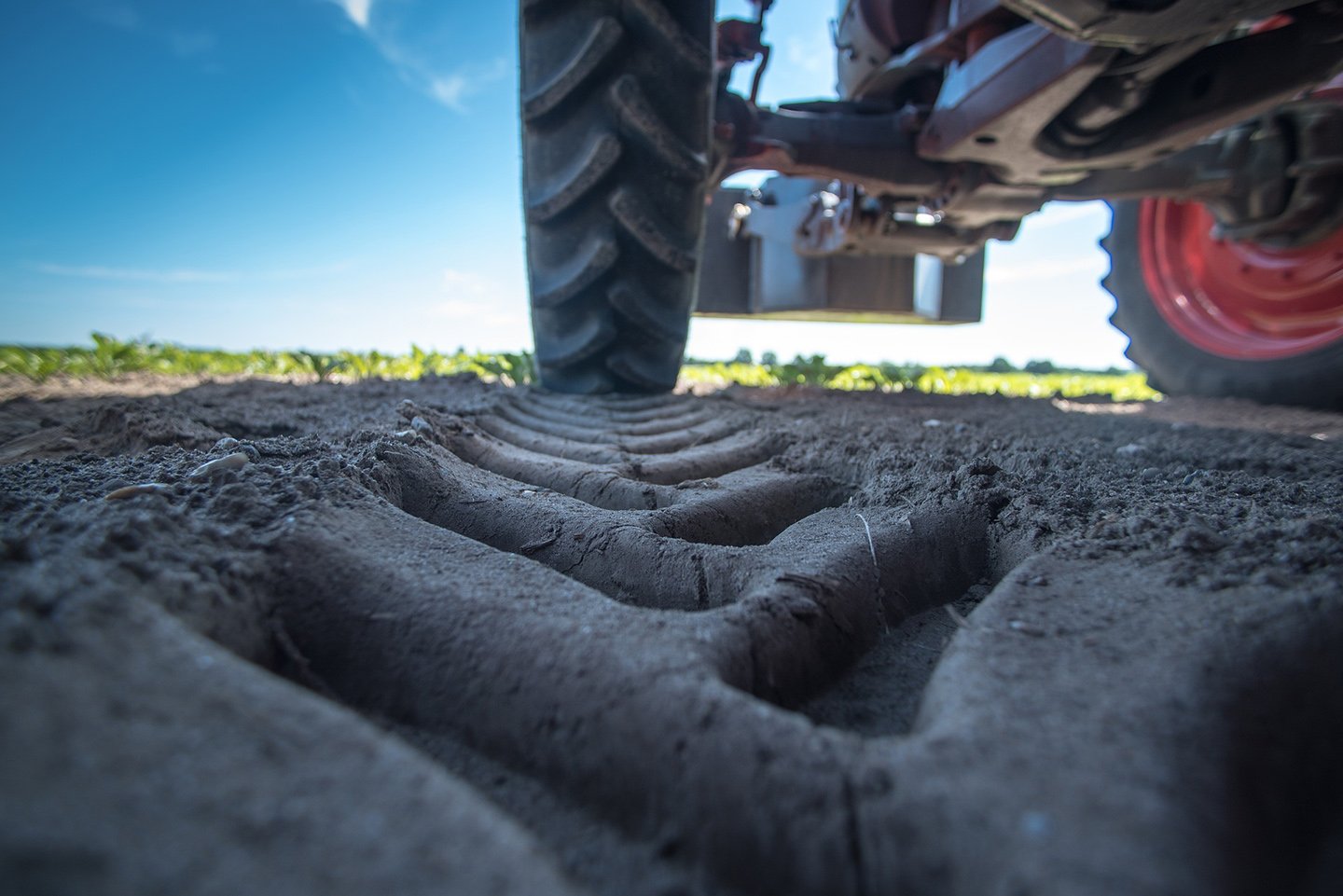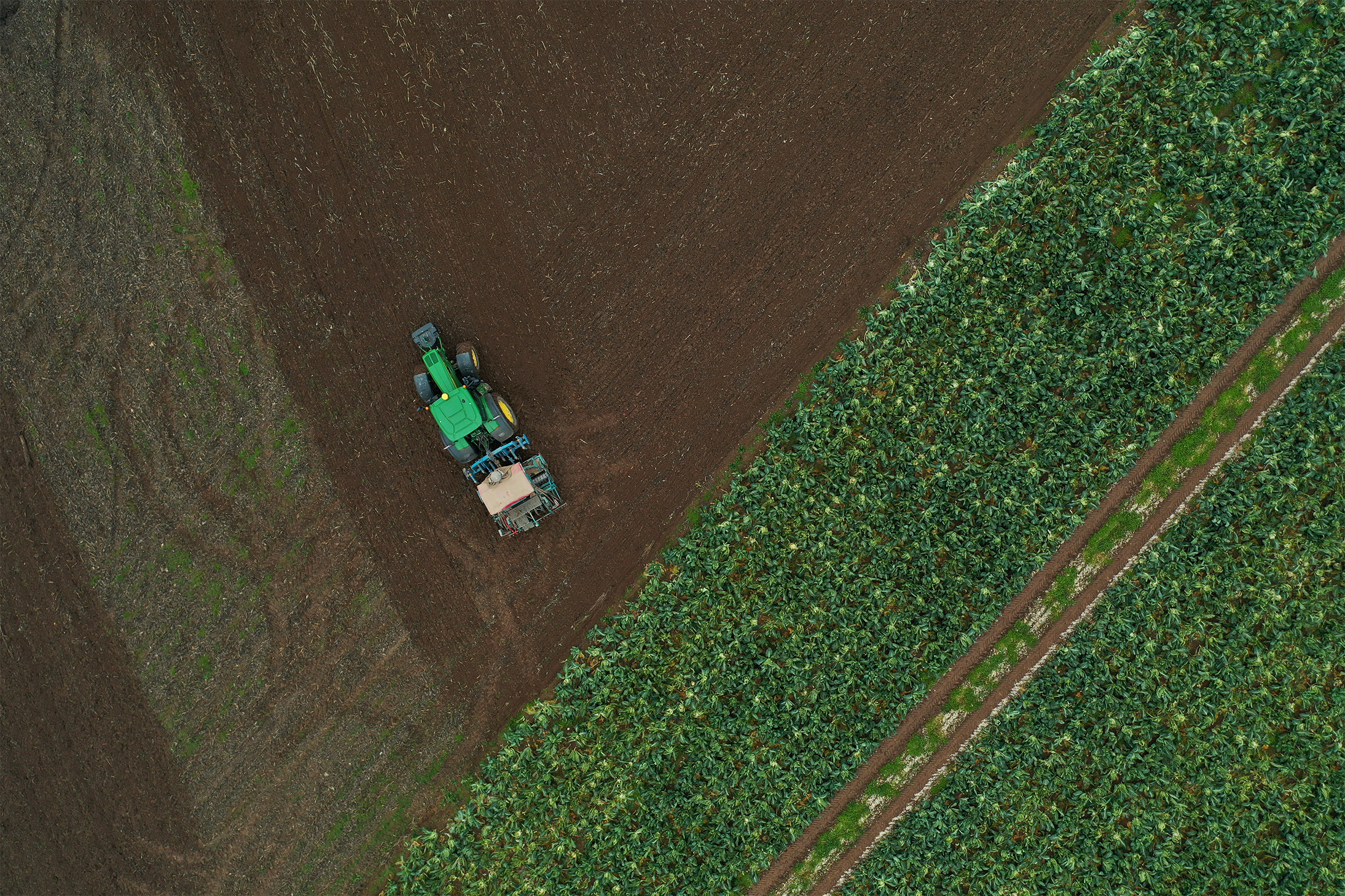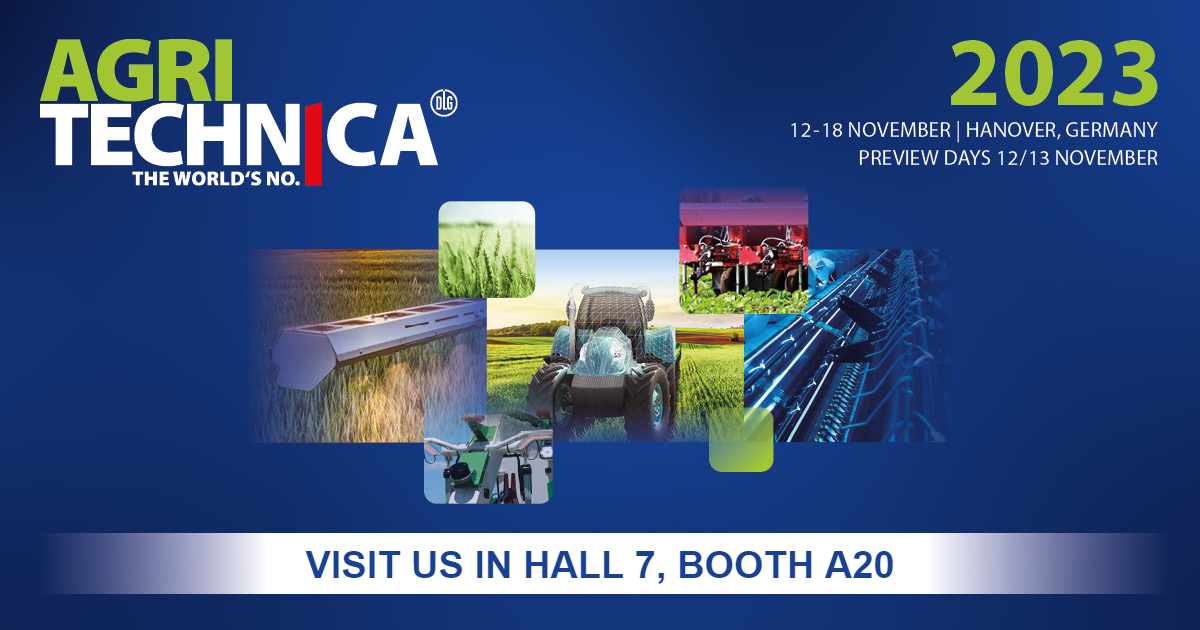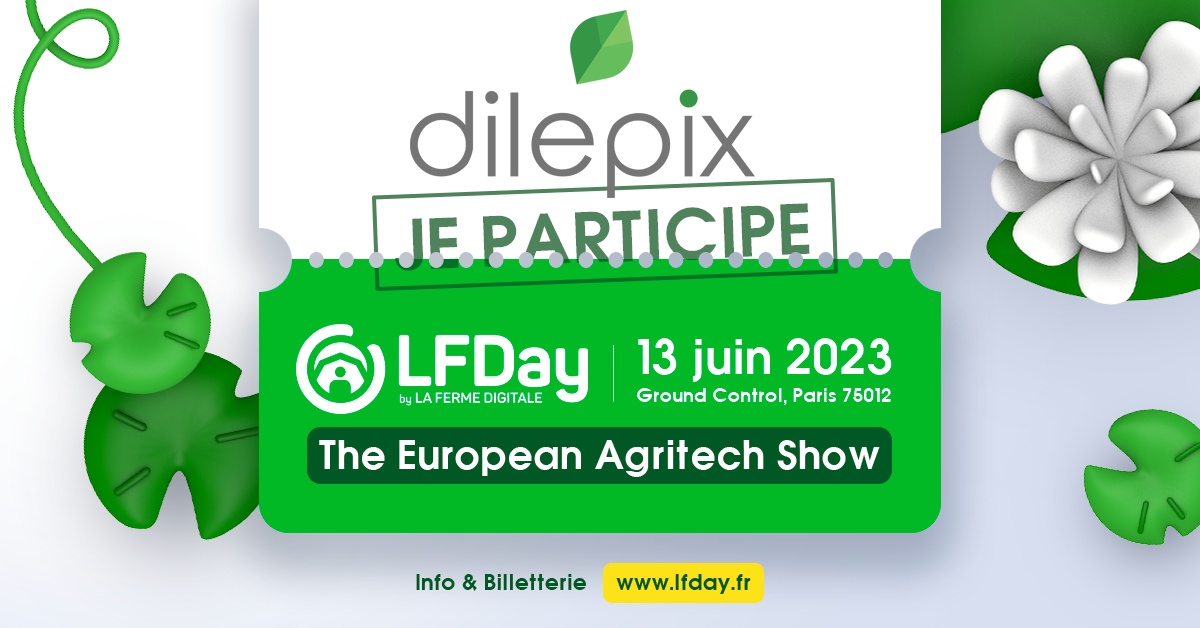The power of social networks is often used to defend causes. People publicly denounce, rightly or wrongly, practices or people.
In the field of animal breeding, some defenders of the animal cause even go so far as to illegally enter farms to film them and publish the videos on social networks.
If their motives are defensible in substance (denouncing farms whose conditions are not tolerable), the form is largely questionable as it stigmatizes an entire profession.
This type of behavior creates a climate of mistrust even among breeders whose practices are exemplary. The fear of seeing people illegally entering their farms pushes them to resort to surveillance systems.
|
Sommaire 1. AI, Deep Learning in agriculture, supervised learning: how does it work? 2. Supervised learning in agriculture & training data |
Paradoxically, the installation of surveillance cameras on farms provokes 2 opposite behaviors:
- On the one hand, there has been a sharp increase in sales of outdoor surveillance cameras to secure buildings.
- On the other hand, there is a certain distrust of the cameras installed inside the buildings filming the animals.
In addition, there is the vagueness surrounding the term "Artificial Intelligence", in particular the applications developed in some countries for facial recognition.
All these elements contribute to develop a climate of mistrust towards the solutions of surveillance of the farms.
During our travels, we are sometimes questioned by farmers, and rightly so:
- "Do cameras and artificial intelligence algorithms detect humans and their behaviors?"
- "How is my personal data protected?"
These questions require answers 🧐
As distributors of video surveillance equipment, veterinarians or technicians who rely on data from video streams, you may be confronted with blockages or reluctance on the part of breeders.
That's why, in this article, we will explain with pedagogy, why cameras ONLY monitor animals and not humans. How are neural networks trained? How does supervised learning work?
AI, Deep Learning, supervised learning: how does it work?
The software solutions developed by Dilepix are based on Deep learning and neural networks (algorithms) capable of various operations on images: classification, detection and segmentation...
If you want to go further and understand perfectly the difference between AI, Deep Learning, Machine Learning in agriculture, we recommend this article written by Aurélien Yol (co-founder of Dilepix).
Supervised learning and training data
Depending on the intended application, the neural networks are trained via an annotation stage carried out by a human operator: this is called supervised learning. This is called supervised learning and is the second step in the creation of a neural network.
This supervised learning phase is performed on training data that contains the situations of interest. Thanks to tools developed by Dilepix, the operator, supported by agronomists or veterinarians, selects in the images the situation(s) of interest.
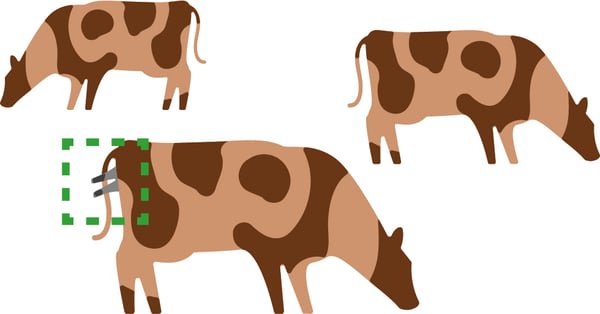
Supervised training case study
🧐 Let's take the example of a camera installed in a stall to detect calving.
The camera films several cows. While most of them are not yet behaving in a way that requires special attention, one cow in the group is preparing to calve. This is the situation of interest that we want to film.
Based on the video stream captured by the cameras, the human operator will make annotations. He indicates precisely to the neural network, the cow to be detected.
This same operation will then be repeated on hundreds, even thousands of situations.
Once the learning phase is over, the "trained" network will be able to recognize a calving on a video that has never been used during the learning phase. It can then be integrated into a software solution for automatic calving detection.
The limits of deep learning and supervised learning
On the other hand, this neural network trained to detect calving will ONLY be able to detect calving and nothing more. As it has not been trained to recognize anything else, it can only be used for a very specific situation. This is where we reach the limit of neural networks.
🧐 But let's push the example a little further!
Let's imagine a neural network that has been trained to recognize cow breeds: Prim'Holstein and Rouge des prés.
We have it tested by a pig farmer who wants to automatically detect the breed of his pigs...
What do you think will happen? 🤔
The neural network that is very good at detecting two breeds of cows will completely fail if it is presented with images of other animals.
Normal, it was not created for that!
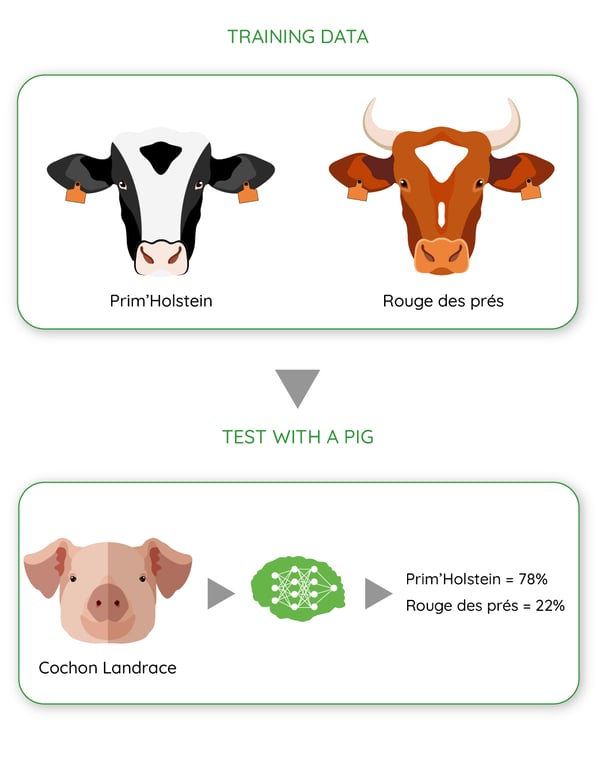
👉It is important to remember that a neural network does not have the reasoning capacity and knowledge of a human brain.
It is only capable of interpreting the image submitted to it based on the data on which it has been trained (Cf Prim'Holstein and Rouge des prés tests).
It will only be able to detect situations for which it has been trained such as
- Measuring the activity of the animals
- Detection of heat
- Detection of calving
- Counting...
👉 Important: It will not be able to detect humans and even less to identify them!
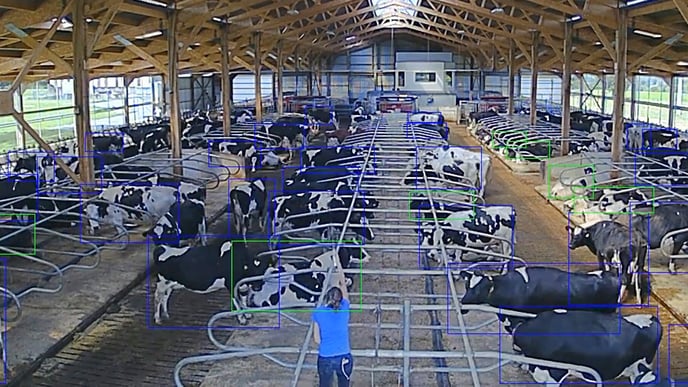
🧐 The proof by the image.
This image is extracted from a video stream on which our neural networks have been trained to detect the activity of cows (standing cow / lying cow).
We can clearly see that the human in the foreground is not detected by the algorithms.
👉 As a distributor of video surveillance equipment, veterinarian or technician, here are some explanations that should reassure the breeders where you intervene and encourage them to install animal surveillance cameras.
🤔 If a detection camera cannot identify a human (if the associated neural network was not created for that purpose), what about the protection of the data generated on farms?
Here we touch on a very important complementary topic.
Protecting the data of our customers and those of the end users of our solutions is a priority for us.
This protection involves, above all, exemplary traceability of the ownership of this data. 🔒
From the camera, through the Cloud where it will be analyzed to its restitution in decision support tools, each step of data transfer is meticulously treated to ensure maximum security.
But that's not all!
In addition to rigorous traceability management, did you know that in the near future, data will be able to be analyzed at the farm level thanks to edge computing 👀
To find out what's behind this term, we invite you to read the article Cloud, Fog, Edge Computing what advances in agricultural data protection?
